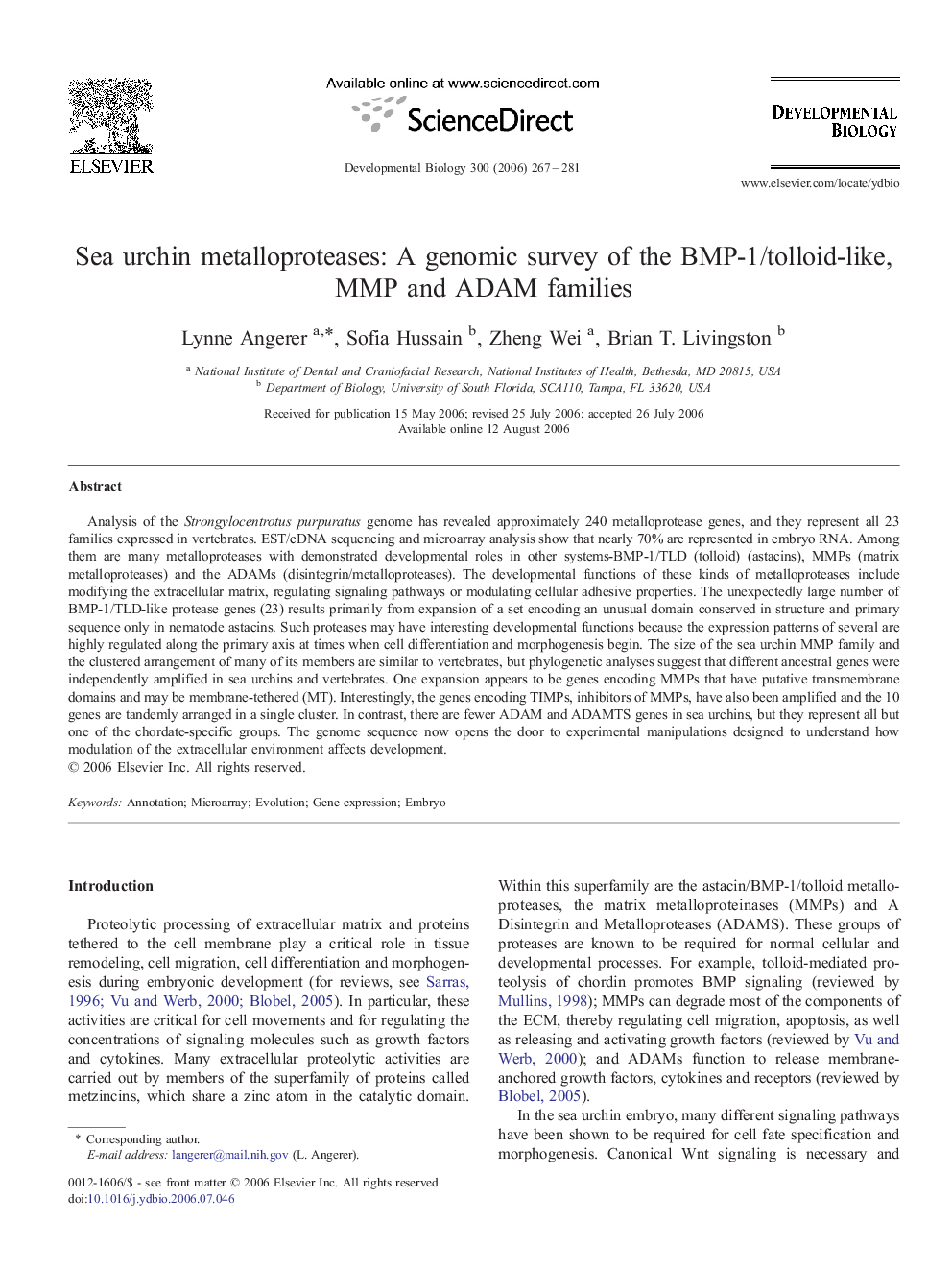| کد مقاله | کد نشریه | سال انتشار | مقاله انگلیسی | نسخه تمام متن |
|---|---|---|---|---|
| 2175727 | 1093850 | 2006 | 15 صفحه PDF | دانلود رایگان |

Analysis of the Strongylocentrotus purpuratus genome has revealed approximately 240 metalloprotease genes, and they represent all 23 families expressed in vertebrates. EST/cDNA sequencing and microarray analysis show that nearly 70% are represented in embryo RNA. Among them are many metalloproteases with demonstrated developmental roles in other systems-BMP-1/TLD (tolloid) (astacins), MMPs (matrix metalloproteases) and the ADAMs (disintegrin/metalloproteases). The developmental functions of these kinds of metalloproteases include modifying the extracellular matrix, regulating signaling pathways or modulating cellular adhesive properties. The unexpectedly large number of BMP-1/TLD-like protease genes (23) results primarily from expansion of a set encoding an unusual domain conserved in structure and primary sequence only in nematode astacins. Such proteases may have interesting developmental functions because the expression patterns of several are highly regulated along the primary axis at times when cell differentiation and morphogenesis begin. The size of the sea urchin MMP family and the clustered arrangement of many of its members are similar to vertebrates, but phylogenetic analyses suggest that different ancestral genes were independently amplified in sea urchins and vertebrates. One expansion appears to be genes encoding MMPs that have putative transmembrane domains and may be membrane-tethered (MT). Interestingly, the genes encoding TIMPs, inhibitors of MMPs, have also been amplified and the 10 genes are tandemly arranged in a single cluster. In contrast, there are fewer ADAM and ADAMTS genes in sea urchins, but they represent all but one of the chordate-specific groups. The genome sequence now opens the door to experimental manipulations designed to understand how modulation of the extracellular environment affects development.
Journal: Developmental Biology - Volume 300, Issue 1, 1 December 2006, Pages 267–281